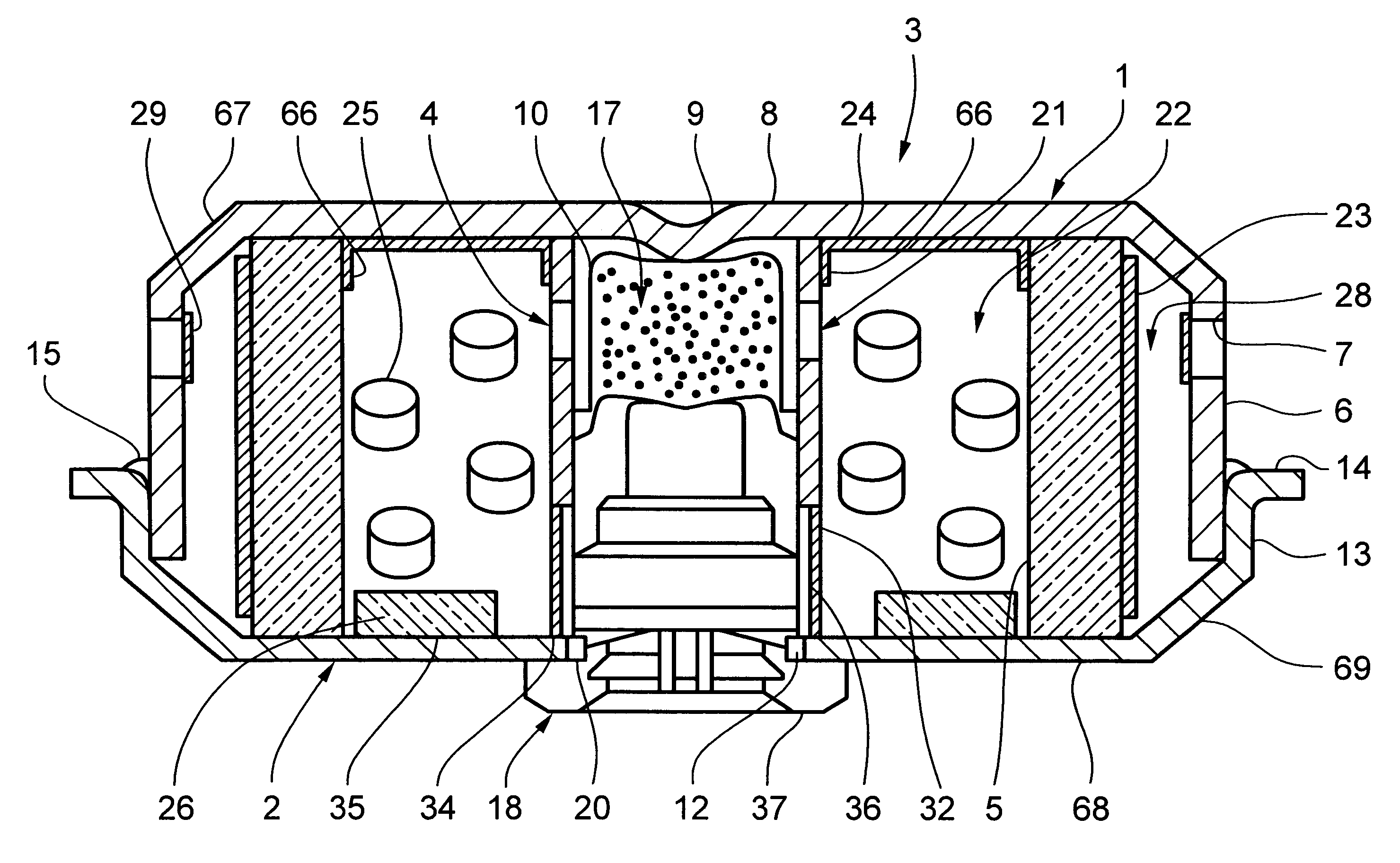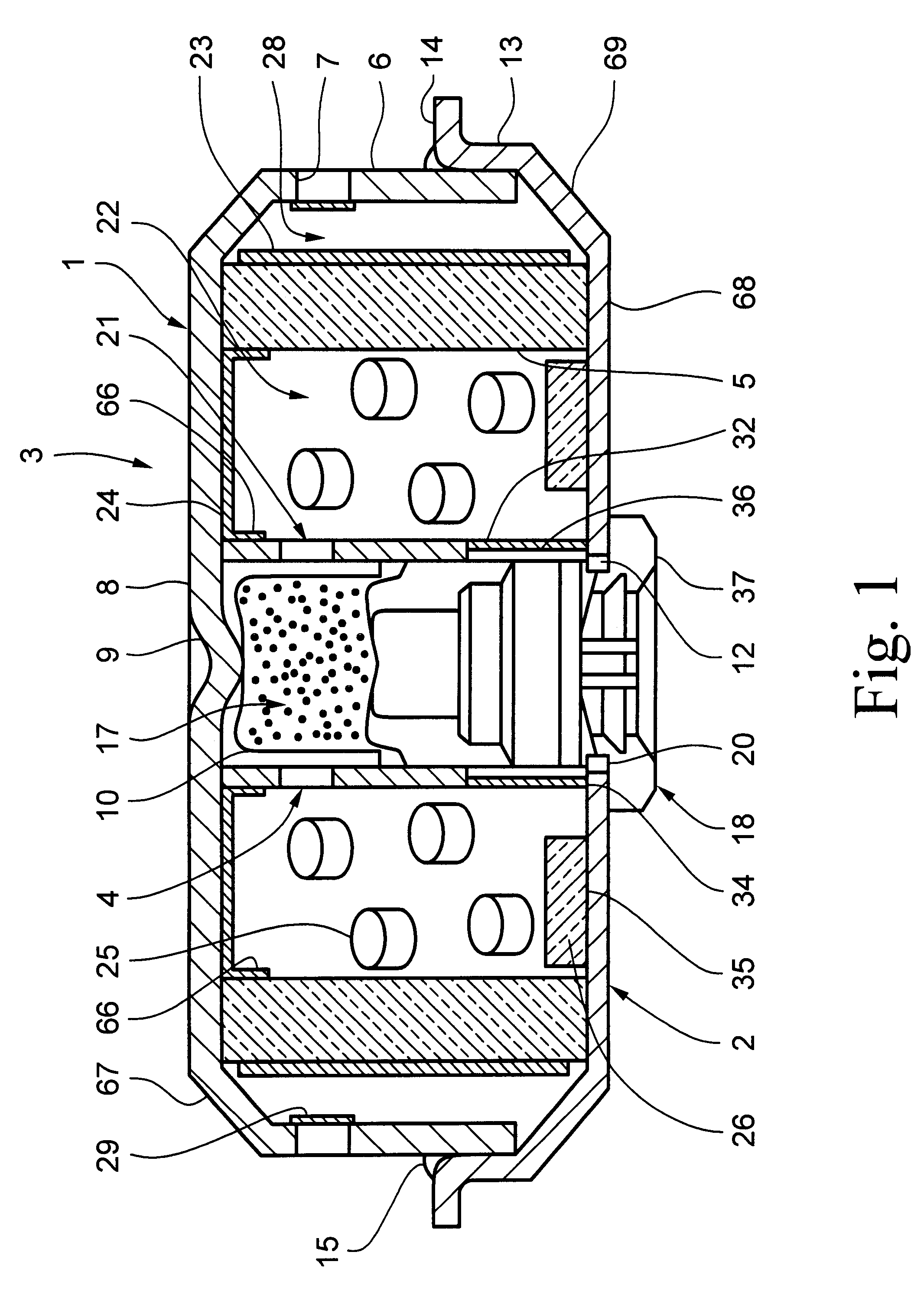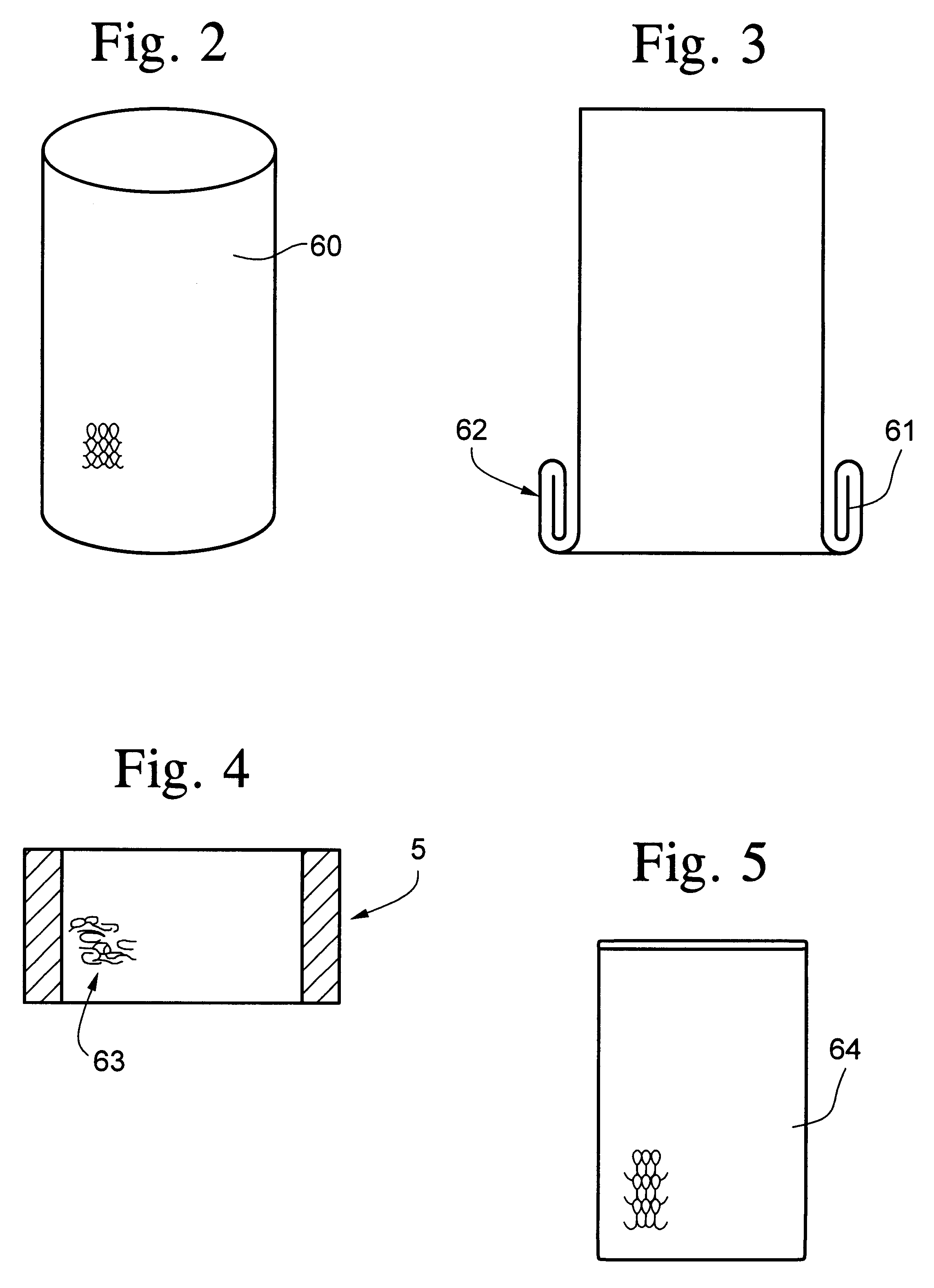Airbag inflator and an airbag apparatus
a technology of airbag inflator and airbag, which is applied in the directions of pedestrian/occupant safety arrangement, vehicular safety arrangement, separation process, etc., can solve the problems of relatively high burn relatively high combustion rate and undesirable toxicity level, and it is practically impossible to manufacture gas generating material in the form of pellets or disks. , to achieve the effect of excellent arresting capability, excellent corrosion resistance and complex clearance structur
- Summary
- Abstract
- Description
- Claims
- Application Information
AI Technical Summary
Benefits of technology
Problems solved by technology
Method used
Image
Examples
second embodiment
The coolant / filter 5' has a coolant / filter support member 38 that blocks the displacement of the coolant / filter 5'. The coolant / filter support member 38 is made by pressing a stainless steel plate about 1 mm thick and has an annular portion 39, which surrounds the horizontally outwardly projecting flange 33 and engages with the inclined portion 70, and a flame resisting plate portion 60 bent from the annular portion 39. The flame resisting plate portion 60 is disposed facing the row of through-holes 21' which are formed in the central cylinder member for the passage of flames from the ignition means and covers an inner circumferential surface 61 of the coolant / filter 5. The flame resisting plate portion 60 has a function of protecting the coolant / filter 5' against flames ejected toward it and also a function of changing the direction of the ejecting flames to ensure that the flames reach the far side of the gas generating material 25' to facilitate combustion. In addition to the inc...
embodiment 2
In the embodiment 1 and embodiment 2, the gas generating material was ignited by the igniter without using a transfer charge.
In the comparison case 1, the gas generating material failed to be ignited without a transfer charge because the decomposition initiation temperature is high and the combustion temperature is too low.
In the comparison case 2, the gas generating material failed to be ignited without a transfer charge because the combustion temperature is low although the decomposition initiation temperature is low.
There is a desire to limit the amount of combustion particulates discharged with the gas from the discharge (diffuser) ports of the inflator housings because such particulates tend to burn an airbag attached to the inflator. An optimum range of particulates is not to exceed 2 g. It should be noted that the combustion temperature of the gas, per se, is not a critical factor for preventing airbag damage.
The coolant / filters of the present invention must work such that th...
PUM
| Property | Measurement | Unit |
|---|---|---|
| equivalent circle diameter | aaaaa | aaaaa |
| thickness | aaaaa | aaaaa |
| internal volume | aaaaa | aaaaa |
Abstract
Description
Claims
Application Information
 Login to View More
Login to View More - R&D
- Intellectual Property
- Life Sciences
- Materials
- Tech Scout
- Unparalleled Data Quality
- Higher Quality Content
- 60% Fewer Hallucinations
Browse by: Latest US Patents, China's latest patents, Technical Efficacy Thesaurus, Application Domain, Technology Topic, Popular Technical Reports.
© 2025 PatSnap. All rights reserved.Legal|Privacy policy|Modern Slavery Act Transparency Statement|Sitemap|About US| Contact US: help@patsnap.com



